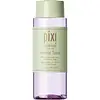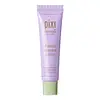What's inside
What's inside
 Key Ingredients
Key Ingredients

 Benefits
Benefits

 Concerns
Concerns

 Ingredients Side-by-side
Ingredients Side-by-side

Water
Skin ConditioningRosmarinus Officinalis Leaf Water
MaskingGlycerin
HumectantPropanediol
SolventPEG-40 Hydrogenated Castor Oil
EmulsifyingMethyl Gluceth-20
HumectantCaprylic/Capric Triglyceride
MaskingPEG-8
HumectantPanthenol
Skin ConditioningMagnesium Ascorbyl Phosphate
AntioxidantSodium Hyaluronate
HumectantLecithin
EmollientPolysorbate 20
EmulsifyingOenothera Biennis Flower Extract
AstringentHibiscus Rosa-Sinensis Flower Extract
HumectantSodium Acrylates Copolymer
Palmitoyl Tripeptide-28
Skin ConditioningHydroxypropyl Cyclodextrin
MaskingRetinol
Skin ConditioningPhenoxyethanol
PreservativeJasminum Officinale Flower/Leaf Extract
MaskingLavandula Angustifolia Flower/Leaf/Stem Extract
MaskingEugenia Caryophyllus Flower Extract
AstringentVitis Vinifera Fruit Extract
Skin ConditioningSodium Citrate
BufferingDisodium EDTA
Citric Acid
BufferingEthylhexylglycerin
Skin ConditioningWater, Rosmarinus Officinalis Leaf Water, Glycerin, Propanediol, PEG-40 Hydrogenated Castor Oil, Methyl Gluceth-20, Caprylic/Capric Triglyceride, PEG-8, Panthenol, Magnesium Ascorbyl Phosphate, Sodium Hyaluronate, Lecithin, Polysorbate 20, Oenothera Biennis Flower Extract, Hibiscus Rosa-Sinensis Flower Extract, Sodium Acrylates Copolymer, Palmitoyl Tripeptide-28, Hydroxypropyl Cyclodextrin, Retinol, Phenoxyethanol, Jasminum Officinale Flower/Leaf Extract, Lavandula Angustifolia Flower/Leaf/Stem Extract, Eugenia Caryophyllus Flower Extract, Vitis Vinifera Fruit Extract, Sodium Citrate, Disodium EDTA, Citric Acid, Ethylhexylglycerin
Water
Skin ConditioningGlycerin
HumectantCaprylic/Capric Triglyceride
Masking1,2-Hexanediol
Skin ConditioningCetearyl Alcohol
EmollientDicaprylyl Carbonate
EmollientRetinyl Palmitate
Skin ConditioningJasminum Officinale Oil
MaskingSodium Hyaluronate
HumectantCeramide 3
Skin ConditioningCopper Tripeptide-1
Skin ConditioningRubus Fruticosus Fruit Extract
AstringentCetearyl Olivate
Sorbitan Olivate
EmulsifyingTrehalose
HumectantButyrospermum Parkii Butter
Skin ConditioningTocopherol
AntioxidantSodium Ascorbyl Phosphate
AntioxidantThymus Vulgaris Extract
PerfumingArginine
MaskingTocopheryl Acetate
AntioxidantHelianthus Annuus Seed Oil
EmollientPanthenol
Skin ConditioningBiotin
AntiseborrhoeicBuddleja Davidii Extract
Skin ConditioningHydroxyethyl Acrylate/Sodium Acryloyldimethyl Taurate Copolymer
Emulsion StabilisingHydrogenated Lecithin
EmulsifyingGlycine Soja Oil
EmollientGlyceryl Arachidonate
EmollientGlyceryl Linoleate
EmollientPolyglyceryl-10 Stearate
Skin ConditioningCitric Acid
BufferingSorbitan Isostearate
EmulsifyingDipropylene Glycol
HumectantPolysorbate 60
EmulsifyingCarbomer
Emulsion StabilisingXanthan Gum
EmulsifyingArachis Hypogaea Oil
Skin ConditioningDisodium EDTA
Water, Glycerin, Caprylic/Capric Triglyceride, 1,2-Hexanediol, Cetearyl Alcohol, Dicaprylyl Carbonate, Retinyl Palmitate, Jasminum Officinale Oil, Sodium Hyaluronate, Ceramide 3, Copper Tripeptide-1, Rubus Fruticosus Fruit Extract, Cetearyl Olivate, Sorbitan Olivate, Trehalose, Butyrospermum Parkii Butter, Tocopherol, Sodium Ascorbyl Phosphate, Thymus Vulgaris Extract, Arginine, Tocopheryl Acetate, Helianthus Annuus Seed Oil, Panthenol, Biotin, Buddleja Davidii Extract, Hydroxyethyl Acrylate/Sodium Acryloyldimethyl Taurate Copolymer, Hydrogenated Lecithin, Glycine Soja Oil, Glyceryl Arachidonate, Glyceryl Linoleate, Polyglyceryl-10 Stearate, Citric Acid, Sorbitan Isostearate, Dipropylene Glycol, Polysorbate 60, Carbomer, Xanthan Gum, Arachis Hypogaea Oil, Disodium EDTA
 Reviews
Reviews

Ingredients Explained
These ingredients are found in both products.
Ingredients higher up in an ingredient list are typically present in a larger amount.
This ingredient is an emollient, solvent, and texture enhancer. It is considered a skin-softener by helping the skin prevent moisture loss.
It helps thicken a product's formula and makes it easier to spread by dissolving clumping compounds.
Caprylic Triglyceride is made by combining glycerin with coconut oil, forming a clear liquid.
While there is an assumption Caprylic Triglyceride can clog pores due to it being derived from coconut oil, there is no research supporting this.
Learn more about Caprylic/Capric TriglycerideCitric Acid is an alpha hydroxy acid (AHA) naturally found in citrus fruits like oranges, lemons, and limes.
Like other AHAs, citric acid can exfoliate skin by breaking down the bonds that hold dead skin cells together. This helps reveal smoother and brighter skin underneath.
However, this exfoliating effect only happens at high concentrations (20%) which can be hard to find in cosmetic products.
Due to this, citric acid is usually included in small amounts as a pH adjuster. This helps keep products slightly more acidic and compatible with skin's natural pH.
In skincare formulas, citric acid can:
While it can provide some skin benefits, research shows lactic acid and glycolic acid are generally more effective and less irritating exfoliants.
Most citric acid used in skincare today is made by fermenting sugars (usually from molasses). This synthetic version is identical to the natural citrus form but easier to stabilize and use in formulations.
Read more about some other popular AHA's here:
Learn more about Citric AcidDisodium EDTA plays a role in making products more stable by aiding other preservatives.
It is a chelating agent, meaning it neutralizes metal ions that may be found in a product.
Disodium EDTA is a salt of edetic acid and is found to be safe in cosmetic ingredients.
Learn more about Disodium EDTAGlycerin is already naturally found in your skin. It helps moisturize and protect your skin.
A study from 2016 found glycerin to be more effective as a humectant than AHAs and hyaluronic acid.
As a humectant, it helps the skin stay hydrated by pulling moisture to your skin. The low molecular weight of glycerin allows it to pull moisture into the deeper layers of your skin.
Hydrated skin improves your skin barrier; Your skin barrier helps protect against irritants and bacteria.
Glycerin has also been found to have antimicrobial and antiviral properties. Due to these properties, glycerin is often used in wound and burn treatments.
In cosmetics, glycerin is usually derived from plants such as soybean or palm. However, it can also be sourced from animals, such as tallow or animal fat.
This ingredient is organic, colorless, odorless, and non-toxic.
Glycerin is the name for this ingredient in American English. British English uses Glycerol/Glycerine.
Learn more about GlycerinPanthenol is a common ingredient that helps hydrate and soothe the skin. It is found naturally in our skin and hair.
There are two forms of panthenol: D and L.
D-panthenol is also known as dexpanthenol. Most cosmetics use dexpanthenol or a mixture of D and L-panthenol.
Panthenol is famous due to its ability to go deeper into the skin's layers. Using this ingredient has numerous pros (and no cons):
Like hyaluronic acid, panthenol is a humectant. Humectants are able to bind and hold large amounts of water to keep skin hydrated.
This ingredient works well for wound healing. It works by increasing tissue in the wound and helps close open wounds.
Once oxidized, panthenol converts to pantothenic acid. Panthothenic acid is found in all living cells.
This ingredient is also referred to as pro-vitamin B5.
Learn more about PanthenolSodium Hyaluronate is hyaluronic acid's salt form. It is commonly derived from the sodium salt of hyaluronic acid.
Like hyaluronic acid, it is great at holding water and acts as a humectant. This makes it a great skin hydrating ingredient.
Sodium Hyaluronate is naturally occurring in our bodies and is mostly found in eye fluid and joints.
These are some other common types of Hyaluronic Acid:
Learn more about Sodium HyaluronateWater. It's the most common cosmetic ingredient of all. You'll usually see it at the top of ingredient lists, meaning that it makes up the largest part of the product.
So why is it so popular? Water most often acts as a solvent - this means that it helps dissolve other ingredients into the formulation.
You'll also recognize water as that liquid we all need to stay alive. If you see this, drink a glass of water. Stay hydrated!
Learn more about Water